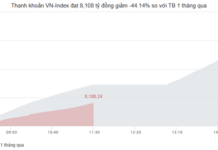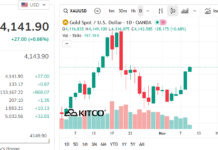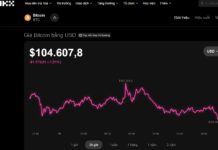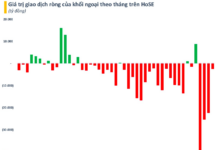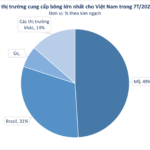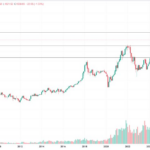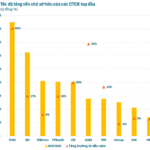
According to Vietnam Customs statistics, cotton imports in October reached over 114,000 tons, valued at more than $187 million, marking a 10% increase in both volume and value.
Since the beginning of the year, Vietnam has imported over 1.4 million tons of cotton, worth over $2.4 billion, reflecting a 16% increase in volume and a 1% rise in value compared to the same period last year.
In the first 10 months, the U.S. emerged as Vietnam’s largest cotton supplier, with 691,000 tons, surpassing $1.2 billion—a 128% surge in volume and 93% in value compared to 2024. In October alone, the increase reached 151% in volume and 128% in value.
The significant growth is attributed to a 15% decrease in average prices compared to last year. The U.S. has consistently been Vietnam’s top cotton supplier for the past year, holding a nearly 49% market share.
Brazil ranks second, with 386,000 tons in the first 10 months, equivalent to $667 million, showing an increase in volume but a decline in value. Meanwhile, imports from Australia saw a sharp drop in both volume and value.

Vietnam is the world’s third-largest cotton importer, consuming 1.5 million tons annually. It also ranks sixth globally in fiber exports and third in textile and apparel exports, trailing only China and Bangladesh.
The surge in Vietnam’s U.S. cotton imports contrasts with the sharp decline in U.S. cotton exports to China in the first half of 2025, as reported by the London Stock Exchange Group (LSEG). This shift is driven by U.S.-China trade tensions and tariffs that have eroded the competitiveness of U.S. cotton in China. Conversely, other Asian markets like Pakistan, Turkey, and particularly Vietnam, have seen dramatic increases.
This shift underscores the global restructuring of the textile supply chain, as international firms increase production in Vietnam to leverage cost advantages, labor, and free trade agreements like CPTPP and EVFTA. This not only helps the U.S. sustain its cotton industry but also solidifies Vietnam’s role as a regional textile hub and a key player in the global cotton-textile value chain.
The robust growth of Vietnam’s textile industry has directly fueled the rapid rise in raw cotton imports. In the first 10 months of 2025, Vietnam’s textile exports rebounded impressively after a downturn, reaching nearly $33 billion, a 7% increase year-over-year. Textile manufacturers, especially those exporting to the U.S., EU, and Japan, are expanding capacity, driving up demand for raw cotton.
According to the Vietnam Textile and Apparel Association (VITAS), domestic spinning mills are operating at full capacity, particularly in key production centers like Binh Duong, Dong Nai, Nam Dinh, and Thai Binh. Increased export orders in Q3 and Q4 2025, coupled with order shifts from China and Bangladesh to Vietnam, have made imported cotton a strategic raw material for ensuring uninterrupted production.
U.S. cotton is prized for its consistent fiber quality, high whiteness, and durability, as well as its compliance with environmental standards, enhancing Vietnamese firms’ global competitiveness. Many major textile companies have signed long-term contracts with U.S. suppliers to secure stable raw material sources for the coming years.





